
Heat Only Rooms That Need It,
Borrowing Energy From The Hot Water Heater.
-
Compatible with typical hot water sources
-
Zone Control: Reduce utility bills with individual room control
-
Low surface temperatures
-
More free space: no furnace room needed
-
Safe for use with potable water
-
Quiet operation
How Does King’s Hydronic System Work?
The concept is simple: Water holds, transfers and moves more energy than forced air. Hydronic heaters redirect the building’s existing hot water source to reclaim theat energy to create comfort heating, heat source.
King’s hydronic heating system uses hot water from your hot water tank (any hot water source — gas, electric, solar, etc.), passes it through highly efficient radiant heat plates, and returns the hot water to your tank. Inside the heater, a gentle fan draws room-temperature air across the radiant plates where the air is warmed before being pushed back out into the room.
But the real magic is in our thermostat system, which maintains consistent individual room temperatures while using the smallest amount of energy possible.
Open Loop: Hydronic System Diagram
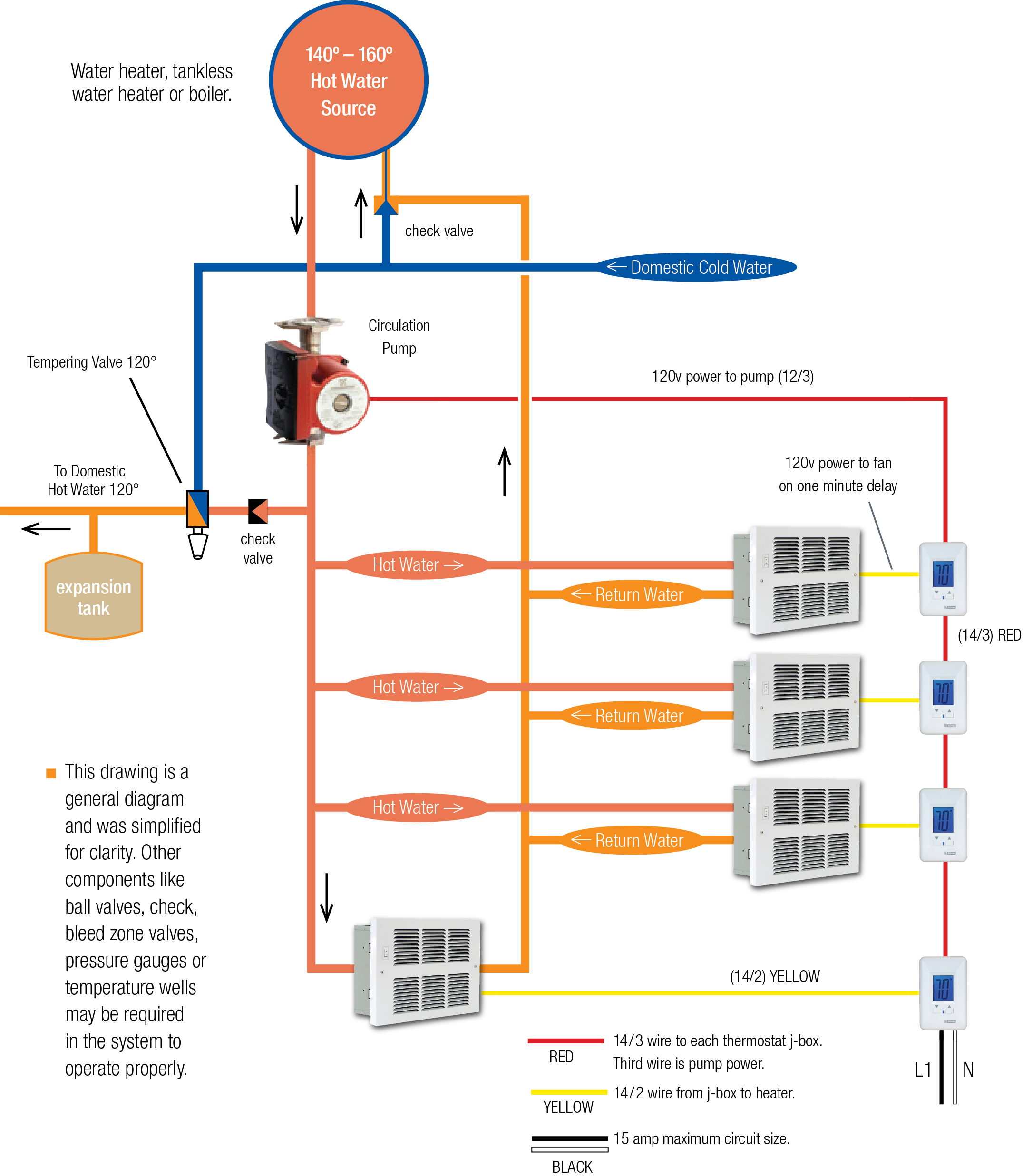
Closed Loop: Hydronic System Diagram
(Isolated from potable water)

System-matched King Thermostats: How The Fan & Thermostat Work Together?
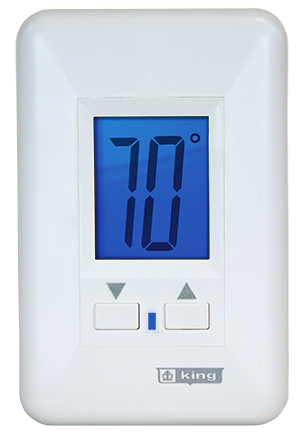
King system-matched thermostat have two steps. The first makes sure hot water is moving over the radiant plates, and the second activates the quiet, low-RPM fan once the radiant plates are up to temperature.
King’s Hydronic thermostats control the room temperature as accurately as +/- one degree (compared to +/- five degrees of other hydronic systems). Energy is saved because the unit begins heating when room temperature drops slightly, and runs briefly, just enough to bring the room back to temperature.
The optional energy-saving ECM (electrically commutated motor) version has a progressive RPM which, in conjunction with the thermostat, adjusts airflow only as much as is needed to maintain room temperature.
model HW: manual adjustment
model HWP: programmable seven-day temperature cycles
model HWPT: programmable, with auto pump cycle (15 minutes every 24 hours)


Model HT
under-cabinet hydronic heater
Fan driven Hydronic toe-space unit for kitchen and bathroom under-cabinet applications.
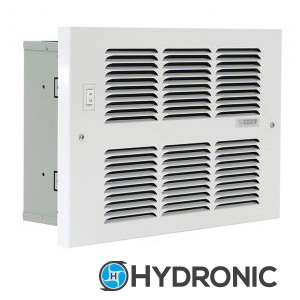
Model H
small in-wall hydronic heater

Model HM and HME
medium in-wall hydronic heater
- 120 volt fan motor
- 3,300 to 18,700 Btu
Fan driven hydronic heater for use with hot water from any energy source. The medium size and quiet operation make it perfect for average sized living spaces.
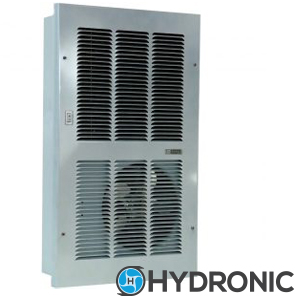
Model HL and HLE
large in-wall hydronic heater
Fan driven hydronic heater for use with hot water from any energy source. The large size and quiet operation make it perfect for larger living spaces.
Ideal for Kitchens:
Comfort: A warm kitchen makes cooking and dining more enjoyable, especially during colder months.
Preventing Cold Spots: Kitchens often have cold spots due to large windows or doors. Heating helps maintain an even temperature throughout the space.
Safety: A warm kitchen reduces the risk of slipping on cold, wet floors, making it safer, especially for children and the elderly.
Energy Efficiency: Properly heated kitchens can help maintain the overall temperature of your home, reducing the workload on your main heating system and potentially lowering energy costs.

Ideal for Transitional Spaces:
Comfort: Keeping these areas warm ensures a comfortable transition between the outdoors and the main living spaces, especially during colder months.
Energy Efficiency: Properly heated transitional spaces help maintain overall temperature of your home, reducing the workload on your main heating system and potentially lowering energy costs.
Preventing Cold Drafts: Heating these spaces helps prevent cold drafts from entering the main living areas, which can make the entire home feel warmer and more comfortable.
Protecting Interiors: Warm transitional spaces can help protect interior finishes and furnishings from the effects of cold and dampness, which can cause damage over time.
Enhanced Usability: Heated transitional spaces are more usable, making it easier to store and access items like coats, shoes, and outdoor gear.
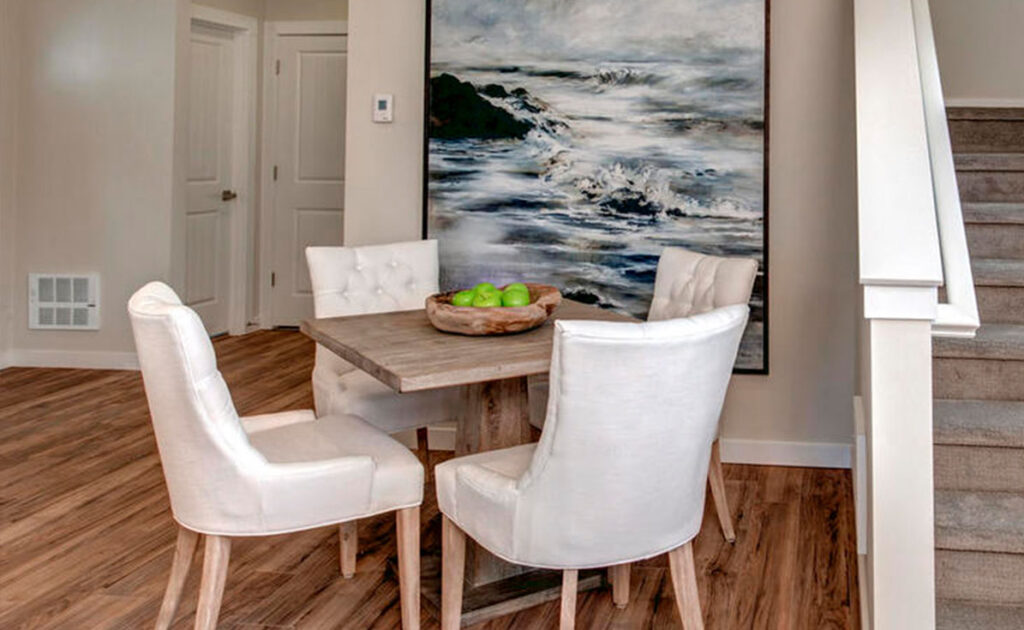
Ideal for Bedrooms:
Comfort: A warm bedroom ensures a cozy and comfortable environment, making it easier to relax and get a good night’s sleep, especially during colder months.
Health: Maintaining a consistent, warm temperature can help prevent respiratory issues and other health problems that can arise from sleeping in a cold room.
Energy Efficiency: By heating rooms individually, you can reduce the need to heat the entire house, potentially lowering overall energy costs.
Protecting Furniture and Belongings: Consistent heating helps protect furniture, electronics, and other belongings from the damaging effects of cold and damp conditions.
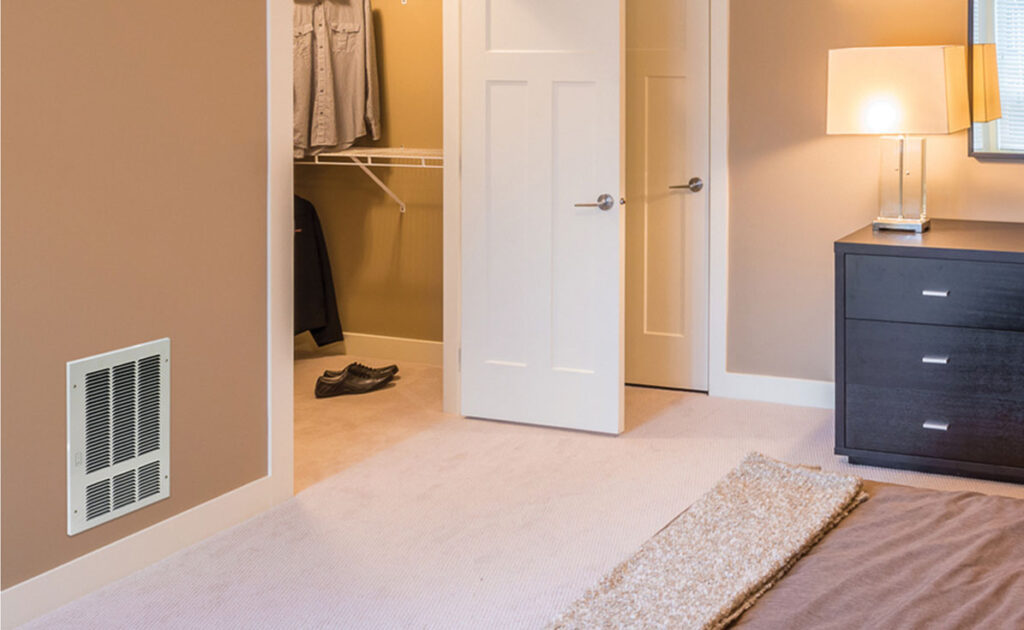
Ideal for Bathrooms:
Comfort: A warm bathroom makes getting ready in the morning or winding down at night much more pleasant.
Preventing Mold and Mildew: Bathrooms are prone to dampness, which can lead to mold and mildew growth. Heating helps to reduce moisture levels, making it harder for mold to thrive.
Protecting Plumbing: In colder climates, unheated bathrooms can lead to frozen pipes, which can burst and cause significant damage.
Safety: A warm bathroom reduces the risk of slipping on cold, wet floors, making it safer, especially for children and the elderly.
Energy Efficiency: Properly heated bathrooms can help maintain the overall temperature of your home, reducing the workload on your main heating system and potentially lowering energy costs.

